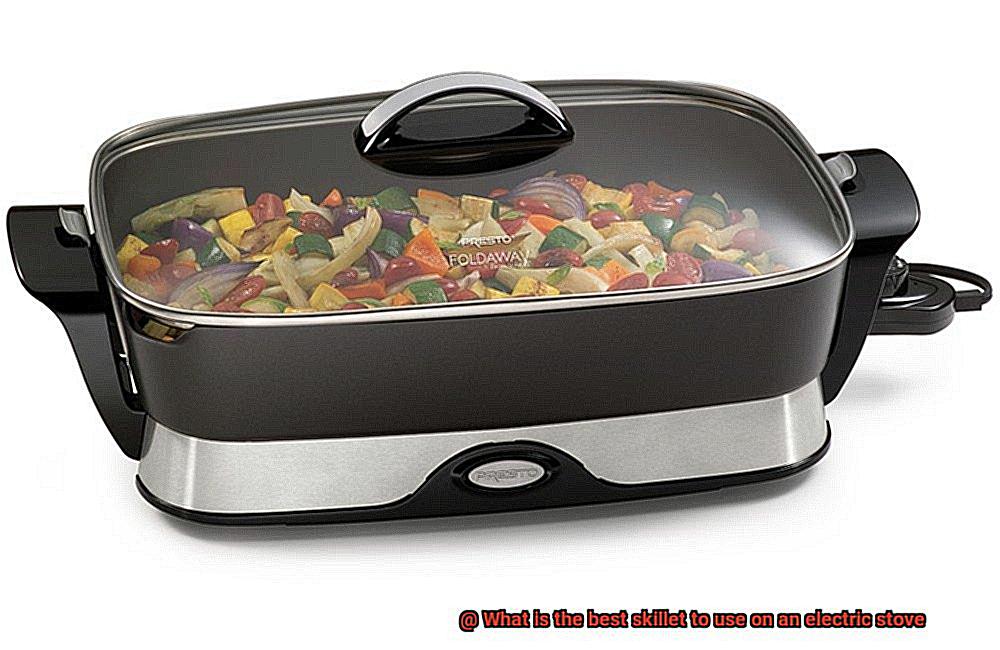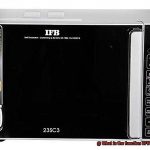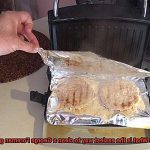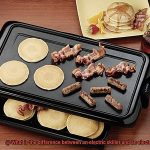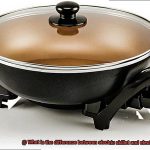Cooking is more than just a mundane task; it’s an art form that requires the right tools and techniques. But what happens when you have an electric stove instead of a gas one? What’s the best skillet to use on an electric stove?
The truth is, not all skillets are created equal, and using the wrong one on your electric stove can lead to uneven cooking, hot spots, and downright frustration. That’s why it’s crucial to choose a skillet that can handle high temperatures and distribute heat evenly.
In this blog post, we’ll take a deep dive into the world of electric stoves and explore the best skillet options available to help you elevate your cooking game. Whether you’re a beginner or a seasoned pro, choosing the right skillet will make all the difference in your culinary creations.
We’ll also discuss essential factors to consider when selecting a skillet for your electric stove, such as material, size, and shape. Plus, we’ll weigh in on the pros and cons of different types of skillets like stainless steel, cast iron, and non-stick.
So let’s get started on our quest for finding the perfect skillet for your electric stove. With our guidance, you’ll be well on your way to achieving new levels of culinary excellence in no time.
Contents
Types of Electric Stoves
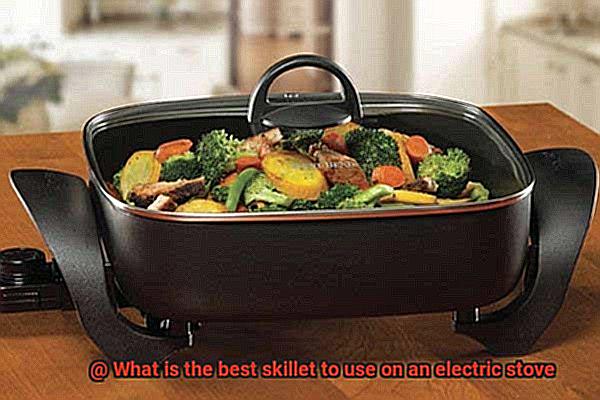
When it comes to electric stoves, there are different types that you can choose from. Each type has its own unique features and benefits. However, not all skillets are suitable for all types of electric stoves. Using the wrong type of skillet can lead to uneven cooking, damage to the stove top, or even safety hazards such as fires or electric shocks. Therefore, it is important to know the differences between these types of electric stoves and the type of skillet that should be used with each.
Coil Stoves
Coil stoves consist of exposed heating elements that heat up when turned on. They are easy to clean and can accommodate most types of cookware, including cast iron skillets. When using a coil stove, it is crucial to use a skillet with a flat bottom to ensure good contact with the heating element. A skillet with a warped or curved bottom may not heat up evenly and can cause hot spots. In addition, using a heavy skillet can help distribute heat more evenly throughout the food being cooked.
Smooth-Top Stoves
Smooth-top stoves have a glass or ceramic surface with heating elements underneath. They are sleek and easy to clean but require a different type of skillet than coil stoves. It is important to use a skillet with a flat bottom and a smooth surface on smooth-top stoves. Rough or textured surfaces can scratch the stove top and damage the heating elements underneath. A skillet with a thick and heavy bottom can also help prevent warping or damage to the stove top.
Induction Stoves
Induction stoves use electromagnetic energy to heat up the cookware directly. They are efficient and fast but require specific cookware made of magnetic materials like cast iron or stainless steel. Cast iron skillets work well on induction stoves because they are magnetic and distribute heat evenly throughout the food being cooked.
When choosing the best skillet for your electric stove, it is also important to consider the material it is made of. Cast iron skillets are a popular choice for electric stoves because they heat up evenly and retain heat well. Stainless steel skillets are also a good choice because they are durable and easy to clean.
Non-stick skillets are another option, but it is important to choose a high-quality non-stick coating that can withstand high heat. Cheaper non-stick coatings may release harmful chemicals when exposed to high temperatures.
In conclusion, using the right type of skillet for your electric stove can make all the difference in achieving even cooking and preventing damage to your stove top. By considering the type of stove you have and the material of the skillet, you can choose the best skillet for your cooking needs.
Skillet Considerations for Glass/Ceramic Tops
We’ve gathered some important considerations to keep in mind to ensure a seamless cooking experience.
First things first, the bottom of your skillet should be flat and smooth. This is essential to avoid any potential scratches or damage to your stove’s surface. Avoid skillets with ridges or raised patterns on the bottom for a smooth cooking experience.
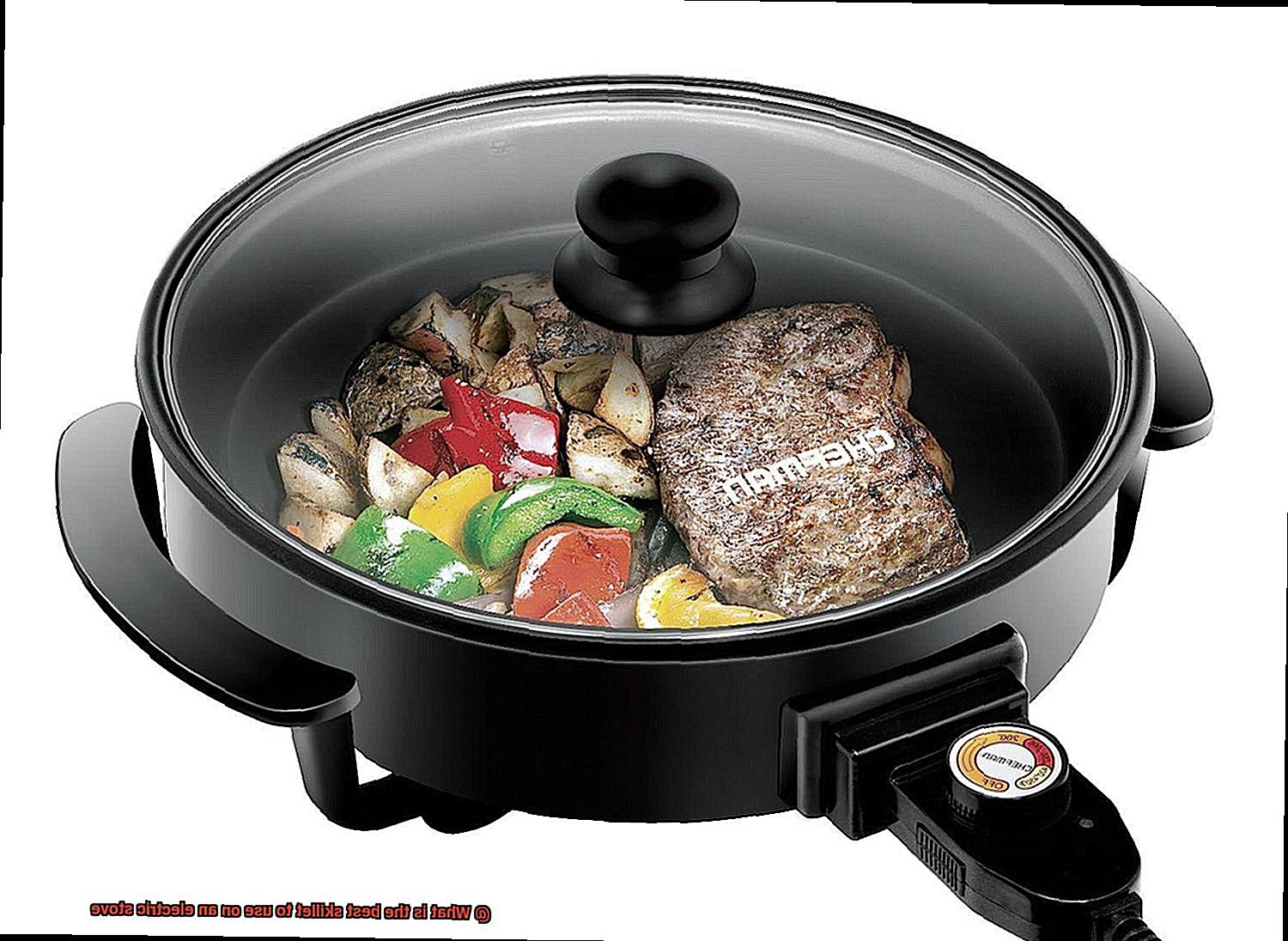
When it comes to material, stainless steel and aluminum are both fantastic options for glass/ceramic tops. Stainless steel is easy to clean and highly durable, while aluminum heats up quickly and evenly. However, be aware that overheating an aluminum skillet can cause marks or discoloration on your stove.
Size does matter. Your skillet should be slightly larger than the heating element on your stove to ensure even heating and prevent hot spots. You may need multiple skillets of varying sizes for different burner sizes.
Don’t forget about the handle. Choose a skillet with a sturdy handle that won’t get too hot during cooking. Silicone-coated handles are a great option for heat-resistance. And for an added bonus, consider selecting a skillet with a well-fitting lid that will trap in heat and moisture during cooking.
Skillet Considerations for Coil Burners
When it comes to cooking on an electric stove with coil burners, choosing the right skillet can make all the difference in your culinary endeavors. To ensure even cooking and safe handling, there are a few important considerations to keep in mind.
Firstly, the material of the skillet is crucial. Stainless steel and cast iron are both excellent options for coil burners as they distribute heat evenly and can handle high temperatures. However, stainless steel is lightweight and easy to clean, while cast iron is heavier and requires more maintenance.
Another consideration is the size of the skillet. Coil burners have a tendency to heat unevenly, so it’s important to choose a skillet that fits the burner properly. A skillet that is too small or too large for the burner may result in uneven cooking or even damage to the skillet or burner.
The shape of the skillet also plays a significant role in its performance on a coil burner. A flat-bottomed skillet is ideal as it allows for maximum contact with the heating element, resulting in even cooking. Skillets with curved or rounded bottoms may not make proper contact with the burner and may result in hot spots or uneven cooking.
Lastly, consider the handle of the skillet. Handles made of metal can get very hot during cooking and may be difficult to handle without oven mitts or potholders. Skillets with heat-resistant handles made of silicone or other materials can be a safer and more comfortable option when cooking on coil burners.
Cast Iron Skillets
Look no further than a tried-and-true cast iron skillet. As an expert on the subject, I can confidently say that cast iron skillets are the perfect match for electric stoves. Here’s why:
First and foremost, cast iron skillets heat up evenly and retain heat incredibly well, making them ideal for searing steaks, burgers, and vegetables. Plus, they’re oven-safe, so you can easily transition from stovetop to oven for even more cooking options.
But what really sets cast iron skillets apart is their ability to handle high temperatures. With the ability to withstand temperatures of up to 700°F, you can sear your meats to absolute perfection without worrying about damaging your pan. And unlike other types of cookware, cast iron skillets are virtually indestructible and can last for generations with proper care.
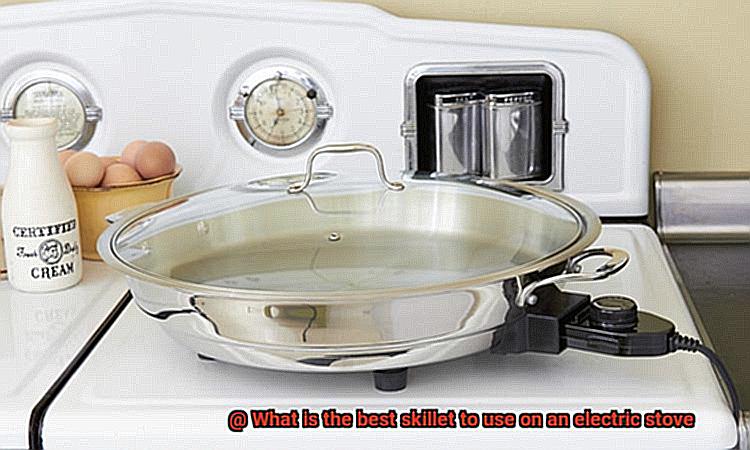
Speaking of care, it’s crucial to season your cast iron skillet before use. Seasoning creates a non-stick surface that prevents food from sticking and makes cleaning a breeze. To season your skillet, simply coat it with a thin layer of vegetable oil or shortening and bake it in the oven at 350°F for an hour. Repeat this process several times until the skillet develops a glossy black finish.
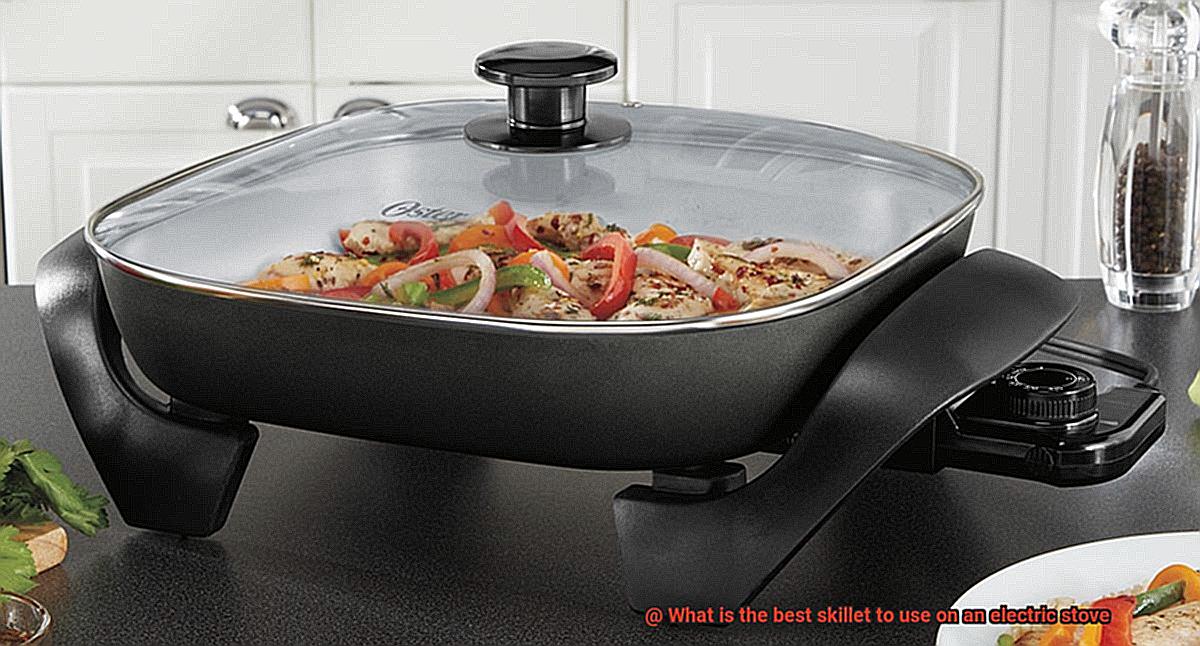
Finally, when cooking with a cast iron skillet on an electric stove, make sure to use the right utensils. Metal utensils can scratch the surface of your skillet and damage the seasoning, so opt for wooden or silicone utensils instead.
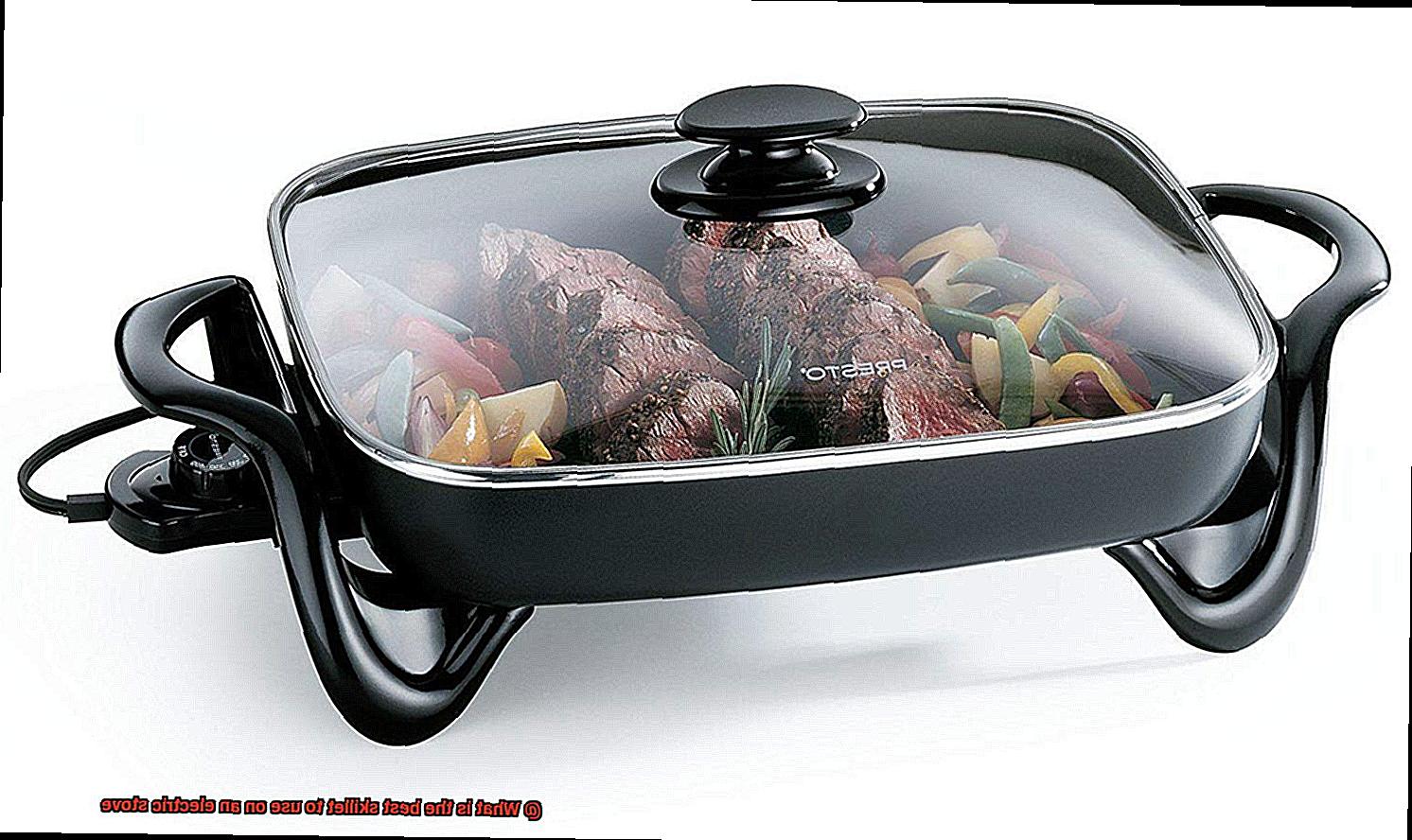
Stainless Steel Skillets
Not only are they versatile and easy to clean, but they can also be used for a variety of cooking methods such as sautéing, frying, and searing.
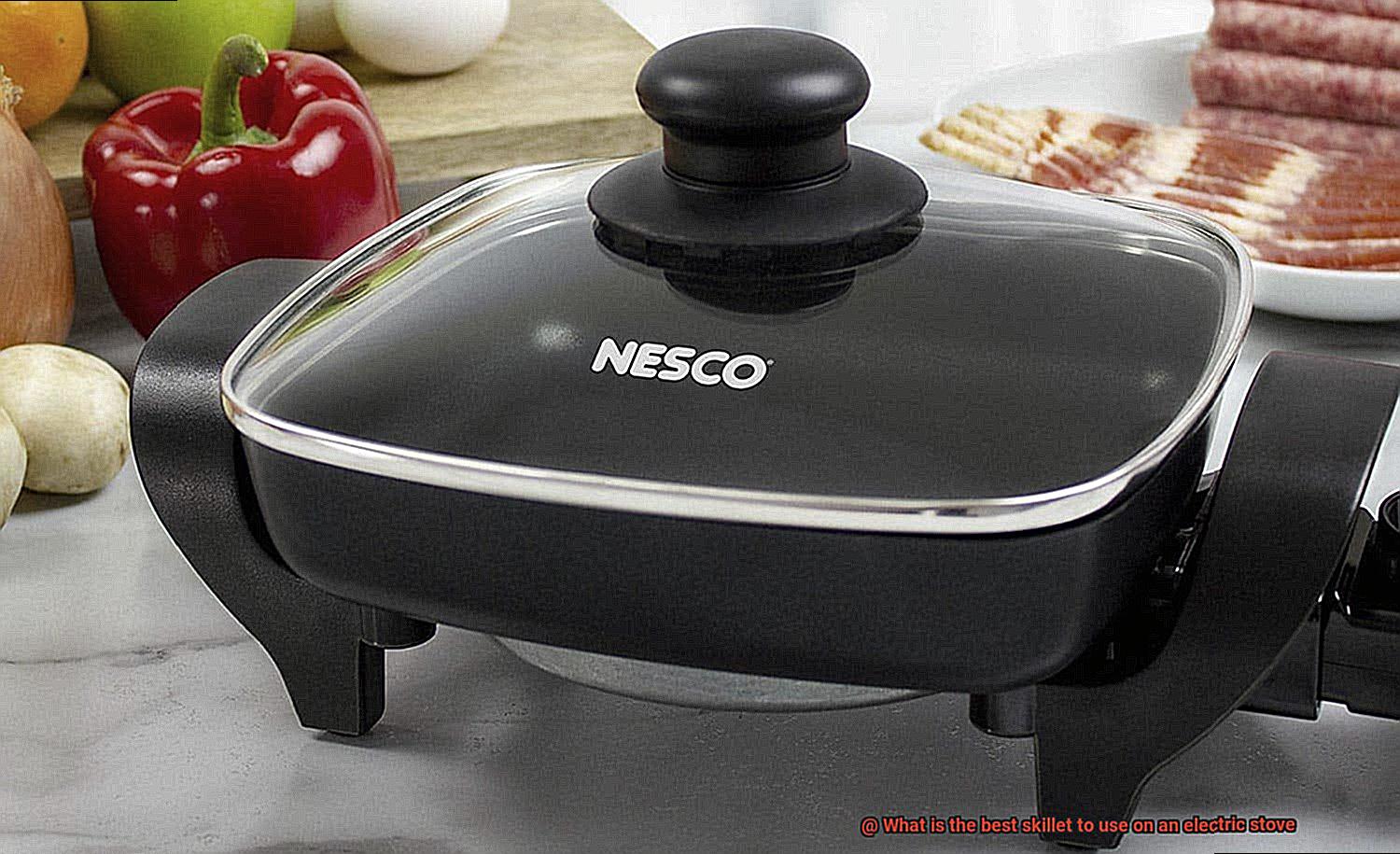
When shopping for a stainless steel skillet for your electric stove, there are a few key factors to consider. First and foremost, you want a skillet with a thick base that heats evenly and retains heat well. This is especially important for electric stoves, which have a tendency to heat up and cool down slowly. A tri-ply or multi-ply construction is ideal, as it consists of layers of metal that help distribute heat throughout the skillet and prevent hot spots.
But it’s not just about the base – the handle also plays a crucial role in your cooking experience. Look for one that stays cool to the touch even when the skillet is hot, allowing you to move it around with ease and without the fear of burning yourself. Comfort is key too, so make sure it feels good in your hand before making your final purchase.
One potential issue with stainless steel skillets on electric stoves is sticking. But fear not – preheating the skillet before adding food and using a little oil or butter can help prevent this from happening.
Durability and ease of cleaning are also important considerations when choosing a stainless steel skillet. Look for one that can withstand frequent use without warping over time, and make sure to follow the manufacturer’s instructions for proper care.
Non-Stick Skillets
Cooking on an electric stove can be a hassle, but non-stick skillets can make it a breeze. These kitchen tools are designed for easy cooking, especially when preparing delicate items like eggs and fish. But not all non-stick skillets are created equal, so it’s important to choose the right one for your needs.
One of the most significant benefits of using a non-stick skillet on an electric stove is that it requires less oil or butter. This is great news for those who are looking to cut down on fat and calories in their meals. Plus, non-stick skillets deliver excellent results without worrying about food sticking to the pan.
However, there are a few things to keep in mind when choosing a skillet for use on your electric stove. First and foremost, you need to ensure you select a high-quality skillet that is durable enough to handle the heat of your electric stove without warping or becoming damaged. Look for skillets made with materials like hard-anodized aluminum or stainless steel, which can withstand high temperatures.
When it comes to coating, avoid harmful chemicals by choosing non-toxic and scratch-resistant coatings that can hold up well to high heat. The wrong type of coating can release harmful chemicals into your food, which is why it’s crucial to select a safe option.
Proper care instructions are also essential for maintaining your non-stick skillet. Avoid using metal utensils or harsh scouring pads that can scratch the surface and damage the coating. Instead, opt for silicone or wooden utensils and gentle cleaning methods.
Choosing the Right Skillet for Your Electric Stove
With so many options available in the market, it can be daunting to choose the right one. But fear not. As an expert in this field, I am here to guide you through the process of selecting the best skillet for your electric stove.
One of the most critical factors to consider when selecting a skillet for your electric stove is the material of the cookware. Electric stoves heat up slowly and evenly, so it is crucial to opt for skillets made of materials that distribute heat evenly, such as copper, stainless steel, or cast iron. These materials also have excellent heat retention properties, meaning they will continue to cook your food even when the stove is turned off.
Size matters. It is essential to choose a skillet that fits well on your electric stove burner. A skillet that is too small or too large can cause uneven heating and cooking. So, before selecting your skillet, measure your burner’s size to ensure a perfect fit.
Another important consideration is the bottom type. Always choose a skillet with a flat bottom to ensure that it sits well on your electric stove’s burner. Warped or uneven bottoms can cause hot spots and uneven heating, leading to undercooked or overcooked food.
Lastly, think about the type of dishes you will be cooking in the skillet. If you plan on searing meat or cooking dishes that require high temperatures, choose a skillet that can withstand high heat without warping or damaging. Cast iron skillets are an excellent option for high-heat cooking as they can handle temperatures up to 700°F.
To summarize, here are some key points to keep in mind:
- Choose a skillet made of materials that distribute heat evenly and have excellent heat retention properties like copper, stainless steel, or cast iron.
- Consider the size of your electric stove burner before selecting a skillet.
- Always choose a skillet with a flat bottom to ensure even heating.
- If you plan on searing meat or cooking dishes that require high temperatures, choose a skillet that can withstand high heat like cast iron.
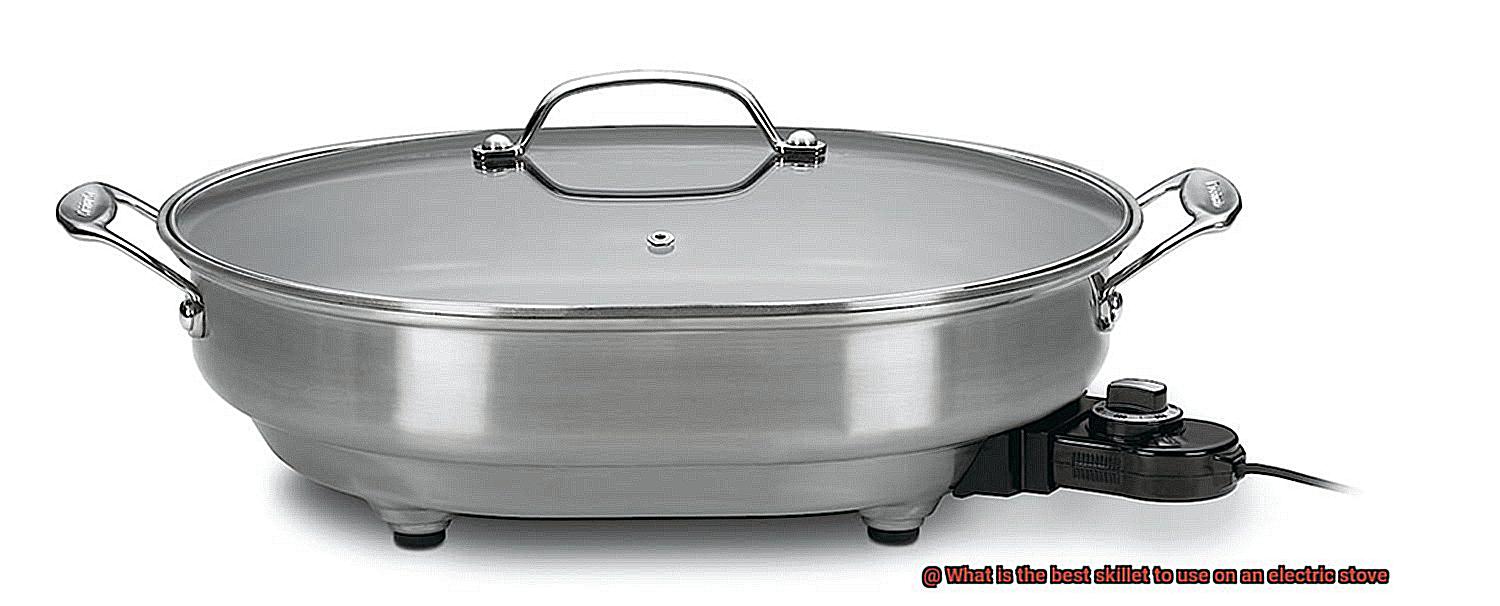
t885B_m3f-U” >
Conclusion
In conclusion, selecting the right skillet for your electric stove is a crucial step towards achieving perfectly cooked meals and avoiding any damage to your stove top. With a variety of electric stoves available, it’s important to know which type of skillet works best with each. For coil stoves, flat-bottomed skillets are ideal, while smooth-top stoves require skillets with a smooth surface. Induction stoves need magnetic cookware like cast iron or stainless steel.
When choosing a skillet for your electric stove, take into account the material, size, and shape. Cast iron skillets are perfect for high-heat cooking and can be passed down through generations with proper care, while stainless steel skillets offer versatility and easy cleaning. Non-stick skillets require careful consideration of the coating material.
It’s also essential to select a skillet that fits well on your burner and has a flat bottom to ensure even heating. The handle should be sturdy and heat-resistant for safe handling during cooking.
By considering these factors when picking out a skillet for your electric stove, you’ll be able to take your culinary creations to new heights in no time.

